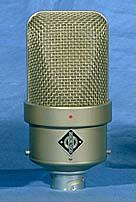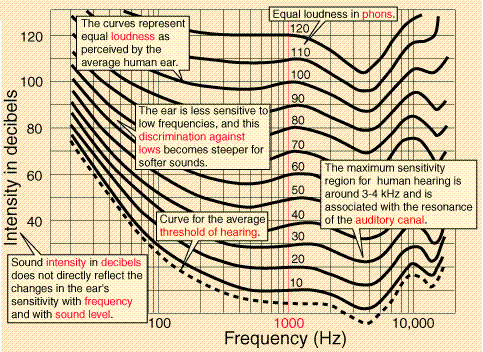

Why don't recording engineers crank up the monitors and "let it rip" all the time?
Let's talk about the frequency response of the human ear. The ear is designed in such a way that as loudness decreases, the ear begins to be more sensitive to midrange and less to bass and treble. At a very low level, a graph of the response curve looks something like a bell's cross-section, which allows us to hear very quiet whispers without lots of rumble and hiss. As the amplitude goes up, the curve becomes more shallow until it reaches it's "flattest" (most accurate) response around at about 85db of loudness. The easiest reference to 85db is the sound of an electric razor while shaving. This loudness level is the best range for audio monitoring, as the ear isn't being fooled by up-turned or down-turned curves.
